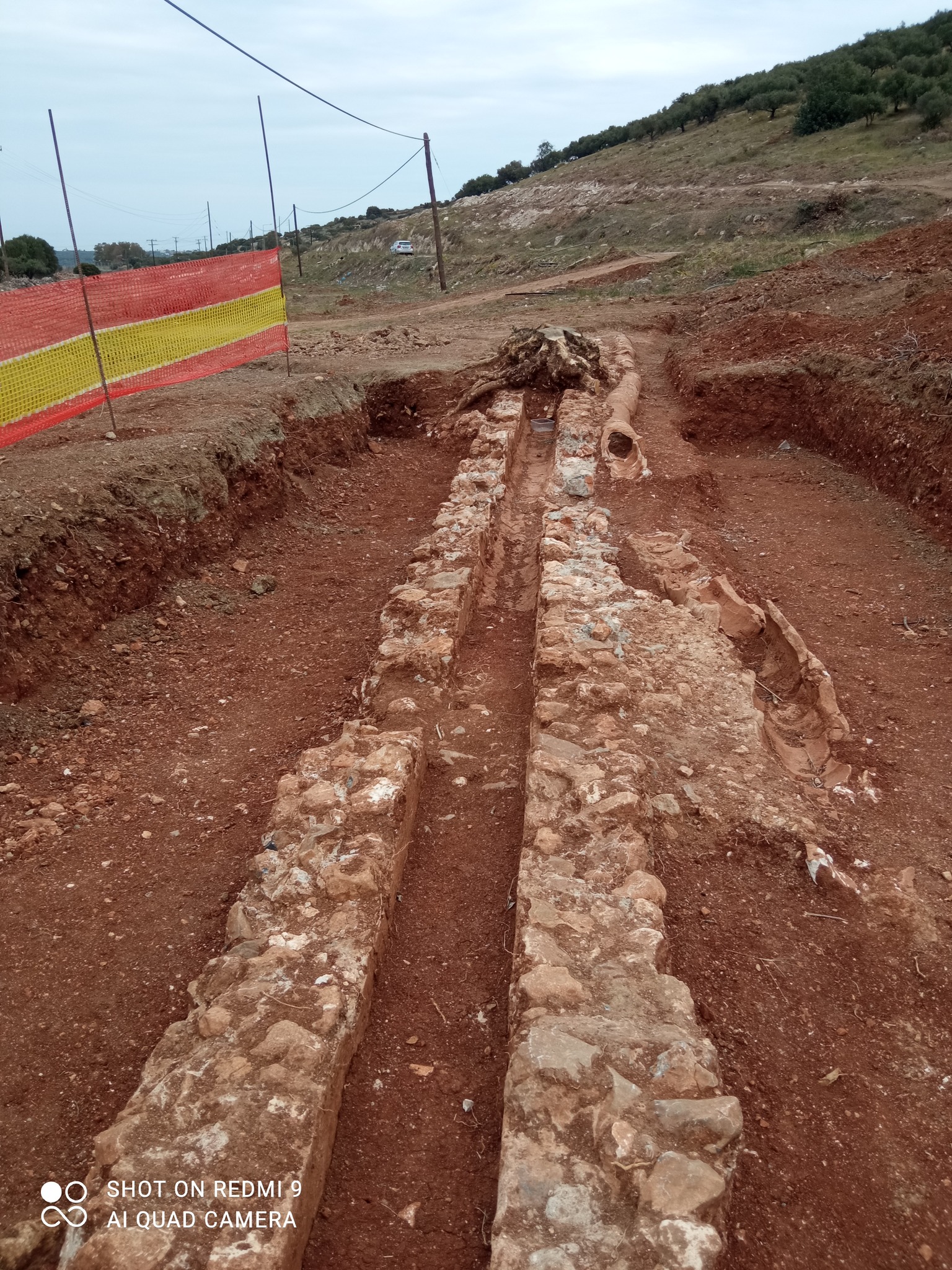What the director of Primary Education of Lasithi Manolis Makrakis said about the Roman aqueduct of Hersonissos
An important archaeological discovery came to light during the works for the connection between BOAK and the airport of Kastelli in Hersonissos. The works revealed part of the water transport pipeline from the Roman aqueduct of Hersonissos.
The head of the Directorate of Primary Education of Lasithi, Manolis Makrakis, refers to the event in his lengthy post, who also quotes a passage from his book “History of Crete.
It specifically mentions:
“Roman Aqueduct of Hersonissos
In the light the ancient water transport pipeline
My dear friends, good month! It is with great pleasure that I present to you today the newly-revealed by the archaeological service pipeline. The section of the pipeline is located 500 km south of the national hub of Hersonissos and came to light, as part of the works for the opening of the road that will connect BOAK with the airport of Kastelli. The pipeline carried water from Kalo Chorio and Krasi to the Peninsula. It consists of two parts, an open (groove) width of approx. 40 cm and a clay (closed) one with a diameter of approx. 25 cm. We are waiting for more information from the archaeological service. Next, I am quoting an excerpt from my book “History of Crete” about the Aqueduct of the Peninsula, part of which was the pipeline.
*In the photos the newly-revealed clay closed pipeline and next to it the open one, the Xerokamares (water bridges) and the fountain in today’s Port of Hersonissos.
The aqueduct of Hersonissos
The aqueduct of Hersonissos was a great work of the Roman era. The Romans were leaders in similar projects. Because the morphology of the land consists of ups and downs, they made the necessary works with the water bridges so that the water flows smoothly in the groove above the bridges. In many places this groove was supported by wall constructions.
Its length was 14 km, it took the water from two sources located at a great distance from each other. The first source was located at the “Leontari” location in Krasi, while the second one was 3 meters south of the tap of the community reservoir of Kalos Horiou Pediados. Then the two pipelines joined into one that ended in the Peninsula. The transport capacity of the pipeline was twice that of Lyktos. The pipeline passed through gullies, ravines and steep (inclined) slopes), through the uneven surfaces of the mountains and ended at the Peninsula. The water of the pipeline was collected in a very large reservoir located on a hill south of the Port of Hersonissos at the “Palatia” location. This covered vaulted tank was 58 m long, 22 m wide and 5.5 m deep. The 4.5m underground section was carved out of natural rock. The thickness of the western walls was 1.60 m. There was a partition with arches (like that of Aptera) to reduce the pressure and hold the domes. They are preserved almost intact. From this tank the water reached the Peninsula with clay pipes. In ancient Hersonissos, where the water reached, it quenched the thirst of the inhabitants and beautified the city by falling from small marble waterfalls, into the beautiful fountains* with the mosaics that decorated the city. Ruins of two large water bridges of that aqueduct can be seen today NW of the village of Potamies, in the place called Xerokamares, as well as on the route Kasteli – Hersonissos, also in the place Xerokamares. They were called Xerokamares from the ruins of the water bridge » Xeres Kamares=Kamares, i.e. bridges without water, dilapidated, they have broken down, consequently the groove at the top of them that carried the water has collapsed.
Sources:
1. Makrakis Manolis, History of Crete, 2021, edition of the Region of Crete
2. Nikolaos Oikonomakis, the aqueduct of Lyttos, period. Lyktos, vol. 1, pp. 66-69, Heraklion 1984)
3. Sythiakaki-Kritsimalli Vasiliki, Monumental topography of the area of the Municipality of Hersonissos, in the book “The Peninsula of the Ages” published by the Municipality of Hersonissos, pub. Season 1999-2002
*water fountains or fountains = catdevice in which water gushes out of a tube. The verb to spring up=to spring up=to spring up, to pour up, to pour forth with a rush, to flood, to overflow
Check out his post:
Photo by Manolis Makrakis via Facebook
Source :Skai
I am Frederick Tuttle, who works in 247 News Agency as an author and mostly cover entertainment news. I have worked in this industry for 10 years and have gained a lot of experience. I am a very hard worker and always strive to get the best out of my work. I am also very passionate about my work and always try to keep up with the latest news and trends.











